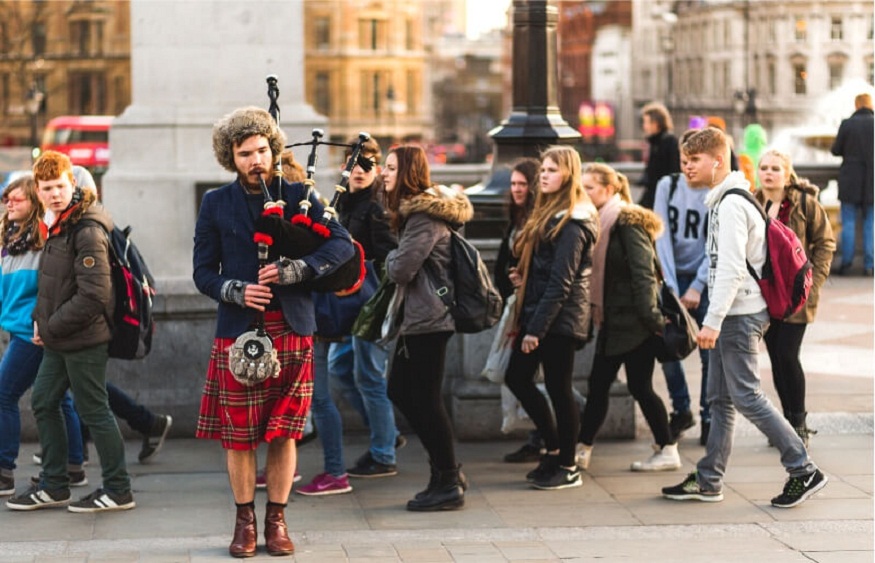Scotland is full of legendary tales and mythological stories that play a vital role in Scottish culture. It creates an emotional connection to their past and has the ability to captivate and engage listeners. Storytelling serves as a great way for the people to develop an understanding and respect for the rich Scottish culture and promote a positive attitude of the people for their culture, land, and traditions. It also allows the young generation to explore their historical roots and express their deep connection with Scottish culture. Scottish storytelling holds a special place that reflects the country’s heritage, landscapes and the spirit of the people. Here, we will discuss in detail the historical roots, cultural significance and modern-day use of storytelling.
Historical Roots of Scottish Storytelling
The tradition of storytelling in Scotland dates back thousands of years with its roots in the ancient Celtic and Pict cultures. The Celts were settled in Scotland around 500 BCE that brought them with a rich oral tradition. These stories are passed down through generations and not only serve as a way of entertainment but also the preservation of rich history and strengthening the community bonds.
Picts are contributed in the storytelling traditions and much of its culture is shrouded to mystery due to the lack of written records. The symbols they left behind serves as a great indication of folk stories and legends. In the 5th century CE, the Scots arrived from Ireland which results in the enrichment of storytelling traditions. The Gaelic language brought by the Scots act as a primary medium for storytelling in Scotland. The Gaelic Bards and traditional storytellers play an important role in preserving and transmitting these ancient stories.
Themes in Scottish Storytelling
Scottish storytelling is a rich tradition that is deeply rooted in the history, culture and landscapes of Scotland. These traditions are passed down through generations and reflect the complexities of Scottish life and their great connection to their Highlands that plays an essential role in the stories. It also shows a resemblance with different tartans and their traditional dress like kilt and many other accessories. It shows how the people wear different types of kilts for men and each clan has its own tartan pattern which expresses their customs and culture. It is also a great way of celebrating the heroism of their legends and a powerful expression of cultural identity. In short, storytelling serves as a means of preserving and conveying cultural traditions and connecting the past to the present.
Storytelling in Scottish Literature
The rich oral tradition of Scottish storytelling has significantly influenced the country’s literature. Most Scottish writers have drawn inspiration from these ancient stories and include them in their works and ensure their preservation in written form. The national poet of Scotland Robert Burns is a great example of how the writer was influenced by the country’s storytelling traditions. He often wrote poems and songs on folklore and traditional themes which captured the essence of Scottish life and culture. Works like “Tam o’ Shanter” reflect the supernatural elements and moral lessons typical of Scottish folklore.
Another famous poet Sir Walter Scott who played a crucial role in popularizing Scottish legends and historical narratives. His novels, such as “Waverley” and “Rob Roy,” combine historical events with folklore, providing an impressive picture of Scotland’s past. Their work helped to strengthen the nation’s identity and cultural heritage in the literary world.
Storytelling in Modern Media
Storytelling in modern media blends ancient folklore with contemporary narratives. This rich cultural practice that is deeply rooted in Scotland’s history, has found new life through various modern platforms such as film, television, digital media, and many others. In film and television, Scottish stories are mostly provided with a mix of historical authenticity and creative adaptation. People wearing different types of kilts for men and other Highlander dresses perform various activities on the live shows and drama series which capture the attention of every person. It results in the promotion of rich culture among the young generation and around the world as well. Iconic films like “Braveheart” and animated features like Disney’s “Brave” have brought Scottish legends and historical figures to global audiences that also celebrate the nation’s heritage. TV series like “Outlander” provide fantastic tales of time travel, romance, and Scottish history that captivate viewers worldwide. In these films and TV series, people mostly wear kilts for the cultural significance and promotion of rich Scottish history and traditions.
Storytelling Festivals and Community Events
Storytelling remains an essential part of Scottish festivals and community events that celebrate Scottish culture and ancient heritage. Hogmanay is famous for the Scottish New Year Celebration which is completely steeped in tradition and storytelling. One of its customs that is known as “first-footing” involves visiting friends and neighbors after midnight, often bringing gifts and sharing stories to bring good luck for the coming year. Another festival Burns Night that is celebrated every year on January 25th to honor the life and work of Robert Burns. The evening typically includes the recitation of Burns’ poetry, along with traditional Scottish music, dance, and food. This exemplifies how storytelling continues to play a central role in Scottish cultural celebrations in the form of poetry and other celebrations.
Impact on National Identity
Storytelling continues to shape Scottish identity and adds a sense of pride and belonging. Through these ancient stories, Scottish connect with their heritage, rich cultural history, and celebrate their unique traditions. Storytelling also plays a vital role in bringing people together and strengthening community bonds. In rural areas, traditional storytelling gatherings act as a popular form of entertainment and social interaction. In urban settings, storytelling events provide a way for individuals to keep their ancestor’s traditions alive and celebrate with pride.
Conclusion
Storytelling is an important part of Scottish culture that reflects the national identity and cultural pride of Scotland. Through festivals, literature, and digital media, storytelling remains an essential part of Scottish life which ensures that the stories of the past continue to inspire and connect future generations. In modern times it serves as keeping Scottish traditions alive among the young generation and all around the world with the help of various platforms. It also adds a sense of community among the individuals and reminds us of the rich traditions of Scottish ancestors.
If you are a Kilt lover and want to wear a kilt that suits your preferences, then you can visit the utility kilt. It is an online store that provides kilts of different varieties that will captivate everyone’s attention. Wear the kilt of your choice and make your events memorable.





